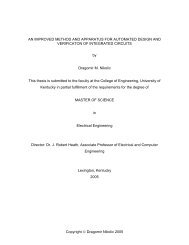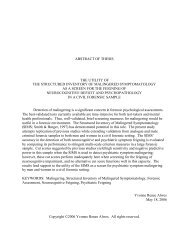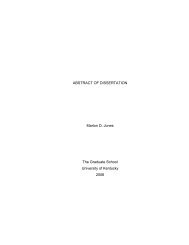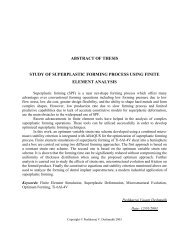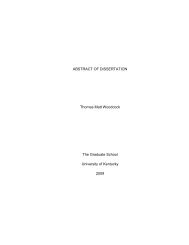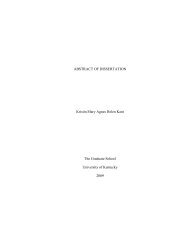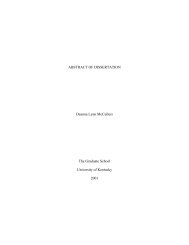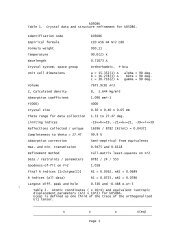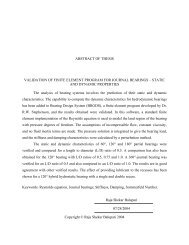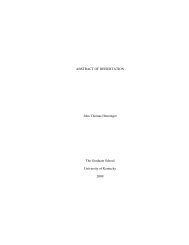Ambystoma - University of Kentucky Libraries
Ambystoma - University of Kentucky Libraries
Ambystoma - University of Kentucky Libraries
Create successful ePaper yourself
Turn your PDF publications into a flip-book with our unique Google optimized e-Paper software.
pufferfish). In particular, the analyses that are presented within Chapter 6 on the<br />
distribution <strong>of</strong> genes that presumably derive from a common ancestral gene that was<br />
located within the genome <strong>of</strong> the species common ancestor; such genes are known as<br />
orthologs. Comparing the orders <strong>of</strong> orthologs among these species reveals features <strong>of</strong><br />
ancestral genomes that have been conserved through time and permits an estimation <strong>of</strong><br />
the relative rates <strong>of</strong> genome rearrangement that have been experienced by different<br />
vertebrate lineages. In Chapter 7, the methods that were used to identify orthologs in<br />
Chapter 6 are improved somewhat and developed into a formal computer program called<br />
MapToGenome. Chapter 8 presents what is arguably the most controversial finding that<br />
has arisen from comparison <strong>of</strong> gene orders between <strong>Ambystoma</strong> and other vertebrates.<br />
This is that the sex chromosomes <strong>of</strong> birds and mammals (which were presumed to have<br />
evolved from independent ancestors, e.g. Fridolffson et al, 1998; Nanda et al, 1999;<br />
Ellegren, 2000; Nanda et al, 2000; Graves et al, 2002; Nanda et al, 2002; Kohn et al,<br />
2004; Handley et al, 2004; Khil and Camerini-Otero, 2005; Kohn et al, 2006) share many<br />
orthologs with a single salamander linkage group. The distribution <strong>of</strong> orthologs on this<br />
linkage group and within the genomes <strong>of</strong> other vertebrate species is highly consistent<br />
with shared ancestry <strong>of</strong> the avian and mammalian sex chromosomes.<br />
In Chapter 9, I describe experiments that have identified the location <strong>of</strong> the major<br />
sex-determining factor <strong>of</strong> A. mexicanum. The fairly uniform patterns <strong>of</strong> recombination<br />
that are observed within sex-linked regions <strong>of</strong> the genome imply that this sex-determining<br />
factor evolved relatively recently, in contrast to the deep ancestry <strong>of</strong> avian and<br />
mammalian sex chromosomes. I conclude this dissertation with a final chapter that<br />
outlines some future avenues <strong>of</strong> research that can be extended from the works that are<br />
described in Chapters 2-9.<br />
Copyright © Jeramiah J. Smith 2007<br />
9



